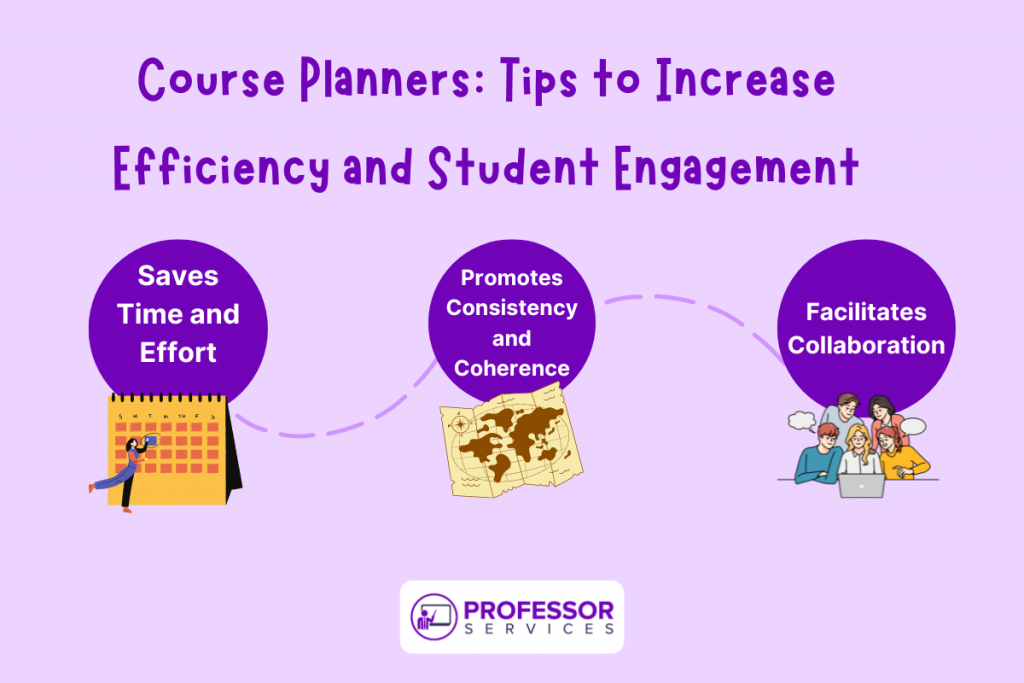You’ve been asked to teach a new course or be a subject matter expert (SME) developing a new program. Where do you start? Designing and developing an online or blended learning course can be challenging for a college professor or instructional designer. SMEs, faculty, and instructional designers are often tasked with course development under tight deadlines. A course planner can help you can streamline the course development and instructional design processes and ensure that your course is effective and engaging.
What is a Course Planner?
A course planner is a tool that helps you plan and organize your course content, activities, assessments, and timeline. It can be a physical planner, a digital spreadsheet, a document, or a wall of sticky notes. A course planner allows you to see the big picture of your course and break it down into manageable tasks. It helps you align your learning objectives with your assessments and activities and ensures your course is coherent and consistent.
Benefits of Using a Course Planner
a course planner has several benefits for both professors and instructional designers, including:
Saves Time and Effort: A course planner allows you to plan and organize your course content and activities efficiently. You can develop an engaging and effective course without wasting time and effort.
Promotes Consistency and Coherence: A course planner ensures that your course is consistent and coherent. You can align your learning objectives with your assessments and activities and ensure each course component contributes to the overall goal.
Facilitates Collaboration: A course planner can facilitate collaboration among instructors, instructional designers, and subject matter experts. It allows everyone to contribute to the course development process and ensures that all perspectives are considered.
Need an agile collaborator for your next course development project?
Backward Design and Course Planning
One practical approach to course planning is backward design. Backward design is a process that starts with the end goal in mind and works backward to design the course content and activities. Use these steps for planning:
Identify the learning objectives: Define what you want your students to learn and be able to do at the end of the course.
Develop assessments: Develop assessments that measure whether students have achieved the learning objectives. Assessments can include quizzes, exams, essays, or projects.
Design activities: Design learning activities that help students achieve the learning objectives and prepare them for the assessments. Activities can include readings, discussions, group work, or simulations.
Design supporting media and content and identify resources: Once clear on how students will demonstrate they met the learning objectives, you can start developing content, media, and resources to support their learning. This content might include videos, audio, slides, textbooks, case studies, articles, and other relevant examples.
By starting with the end goal and working backward, you ensure that each course component is aligned with your learning objectives and assessments. Backward design is an effective approach to course planning that can save time and effort and promote consistency and coherence.
Using a course planner can help you develop an engaging online or blended learning course. It can save time and effort, promote consistency and coherence, and facilitate collaboration among instructors and instructional designers. So, consider using a course planner for your next course development project! Backward design is an effective approach to course planning that can ensure that each component of your course is aligned with your learning objectives and assessments.
Angela
Latest posts by Angela (see all)
- The Art of Connection: Networking and Professionalism in Academia - July 25, 2024
- Got the Teaching Job? Now, You Need To Attend the Faculty Training - July 1, 2024
- Higher Education Trends: Insights from Our COO, Sheila Fry - June 20, 2024
